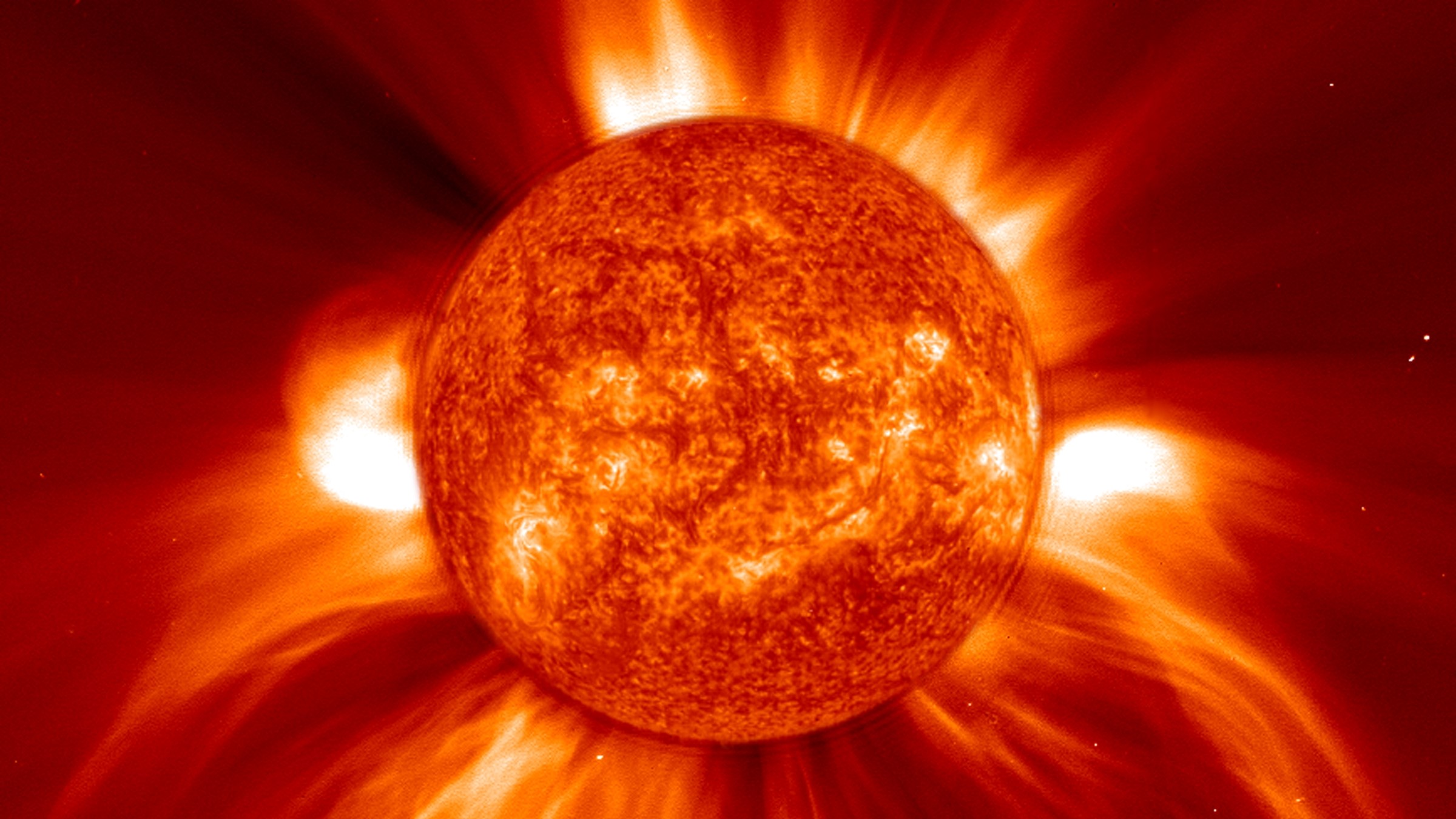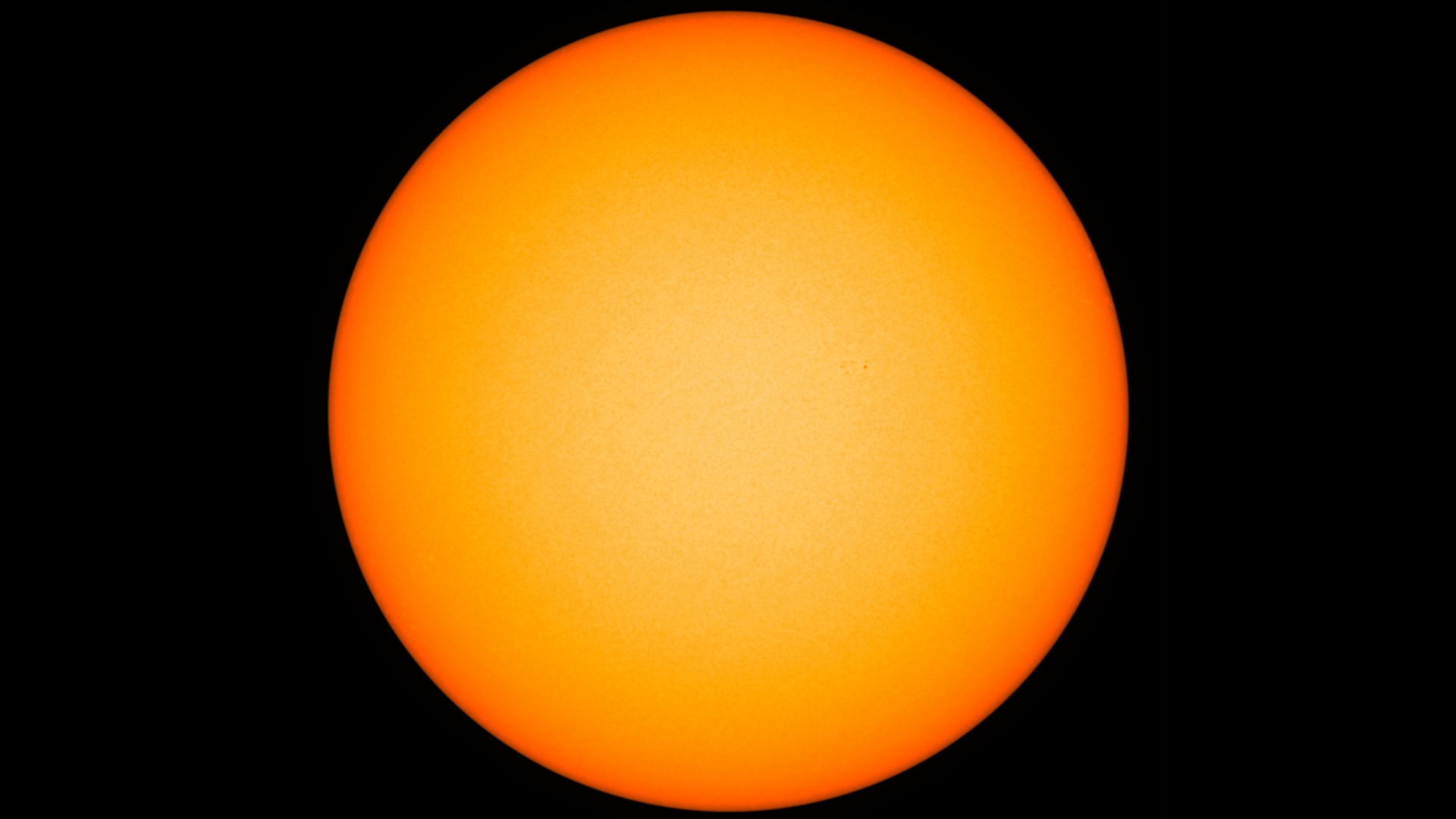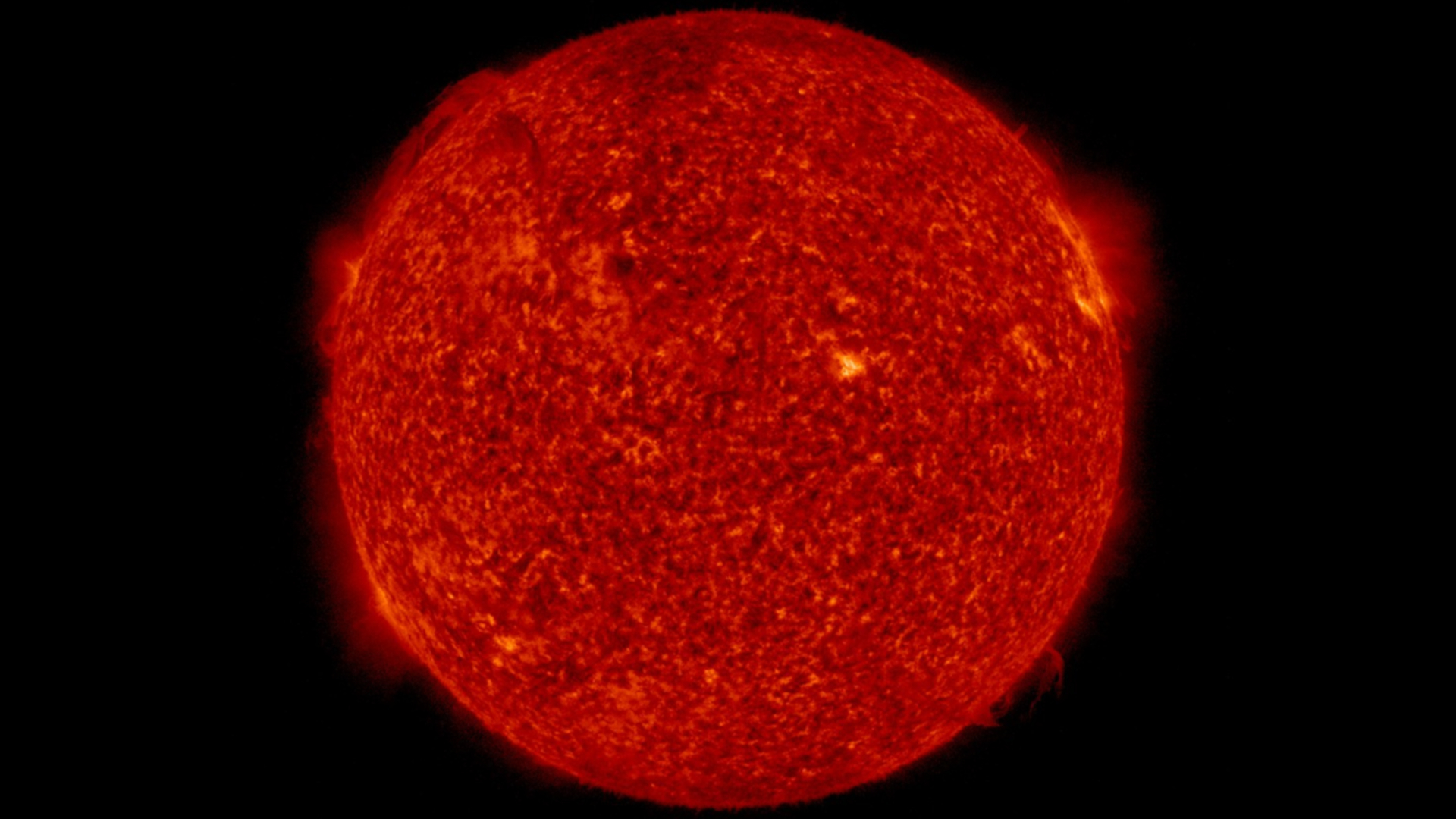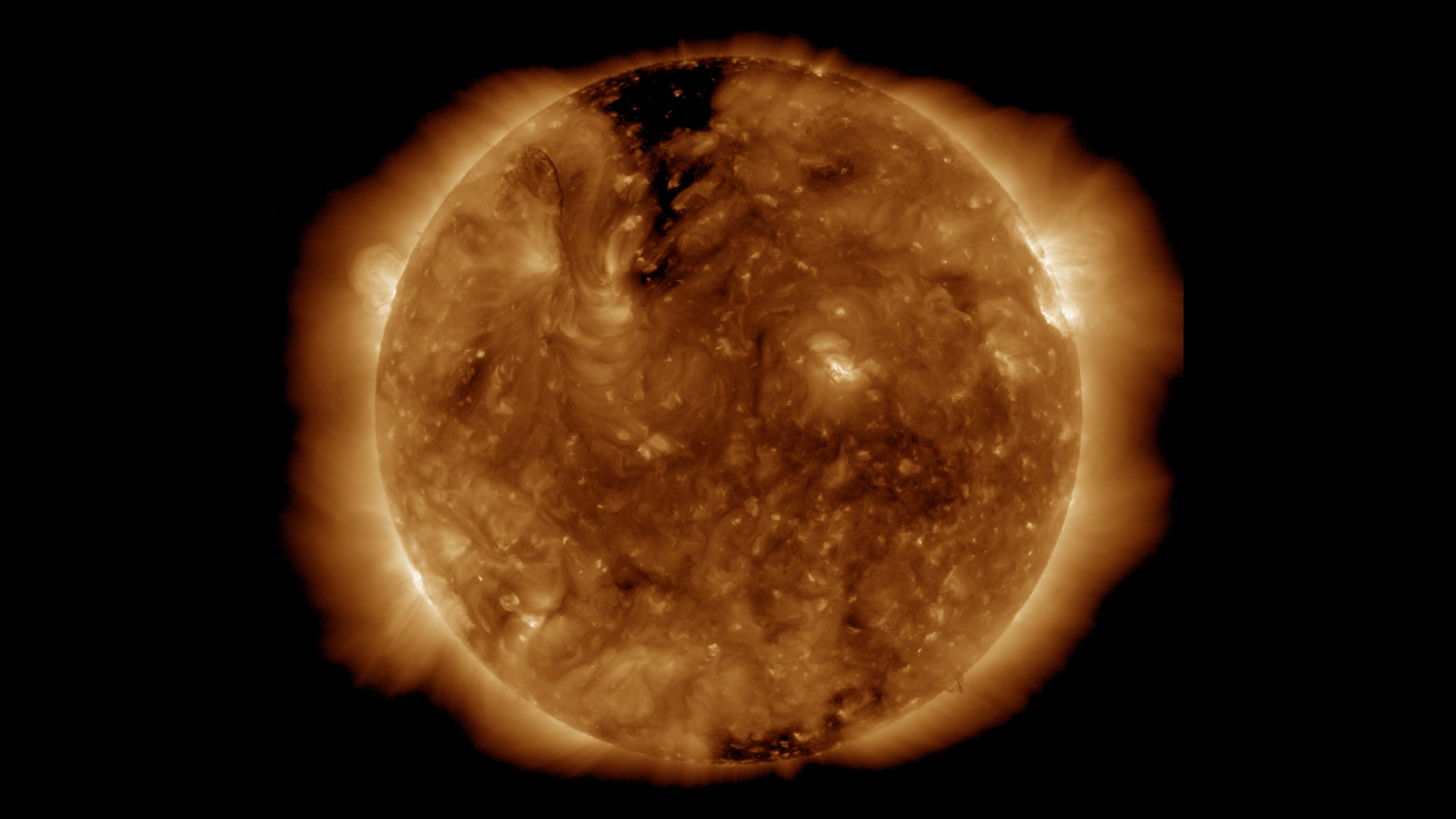The sun's atmosphere: Photosphere, chromosphere and corona
Each layer of the sun’s atmosphere exhibits distinct traits.

The sun's atmosphere is made up of several layers, mainly the photosphere, the chromosphere and the corona.
It's in these outer layers that the sun's energy, which has bubbled up from the sun's interior layers over the course of a million years, is detected as sunlight, according to University Corporation for Atmospheric Research (UCAR).
Related: How far is Earth from the sun?
The sun's photosphere

The photosphere is the lowest layer of the sun's atmosphere — the innermost layer we can observe directly. The term photosphere means "sphere of light" and is the layer where most of the sun's energy is emitted. It takes about eight minutes for sunlight from the photosphere to reach Earth.
The temperature of the photosphere ranges from 11,000 degrees Fahrenheit (6,125 degrees Celsius) at the bottom to 7,460 F (4,125 C) at the top. The photosphere is significantly cooler than temperatures at the sun's core, which can reach about 27 million F (15 million C) according to NASA. The sun's photosphere is about 300 miles (500 kilometers) thick, which is relatively thin when compared with the 435,000 miles (700,000 km) radius of the sun.
The photosphere is marked by bright, bubbling granules of plasma and darker, cooler sunspots, which emerge when the sun's magnetic field breaks through the surface. Sunspots appear to move across the sun's disk. Observing this motion led astronomers to realize that the sun rotates on its axis. Since the sun is a ball of gas with no solid form, different regions rotate at different rates. The sun's equatorial regions rotate in about 24 days, while the polar regions take more than 30 days to make a complete rotation.
The photosphere is also the source of solar flares: tongues of fire that extend hundreds of thousands of miles above the sun's surface. Solar flares produce bursts of X-rays, ultraviolet radiation, electromagnetic radiation and radio waves.
The sun's chromosphere

The layer above the photosphere is the chromosphere. The chromosphere emits a reddish glow as super-heated hydrogen burns off. But the red rim can only be seen during a total solar eclipse. At other times, light from the chromosphere is usually too weak to be seen against the brighter photosphere.
The chromosphere may play a role in conducting heat from the interior of the sun to its outermost layer, the corona. "We see certain kinds of solar seismic waves channeling upwards into the lower atmosphere, called the chromosphere, and from there, into the corona," Junwei Zhao, a solar scientist at Stanford University in Stanford, California, and lead author of a study that tracked waves from sunspots said in a statement. "This research gives us a new viewpoint to look at waves that can contribute to the energy of the atmosphere."
The sun's corona

The third layer of the sun's atmosphere is the corona. Like the chromosphere, the sun's corona can only be seen during a total solar eclipse (or with NASA's Solar Dynamics Observatory). It appears as white streamers or plumes of ionized gas that flow outward into space. Temperatures in the sun's corona can get as high as 3.5 million degrees F (2 million degrees C). As the gases cool, they become the solar wind.
Why the corona is up to 300 times hotter than the photosphere, despite being farther from the solar core, has remained a long-term mystery.
"That's a bit of a puzzle," Jeff Brosius, a space scientist at Catholic University in Washington, D.C., and NASA's Goddard Space Flight Center in Greenbelt, Maryland, said in a statement. "Things usually get cooler farther away from a hot source. When you're roasting a marshmallow you move it closer to the fire to cook it, not farther away."
Research suggests that tiny explosions known as nanoflares may help push the temperature up by providing sporadic bursts reaching up to 18 million F (10 million C).
"The explosions are called nanoflares because they have one-billionth the energy of a regular flare," Jim Klimchuk, a solar scientist at NASA's Goddard Space Flight Center in Maryland, said in a statement. "Despite being tiny by solar standards, each packs the wallop of a 10-megaton hydrogen bomb. Millions of them are going off every second across the sun, and collectively they heat the corona."
Giant super-tornados may also play a role in heating the sun's outer layer. These solar twisters are a combination of hot-flowing gas and tangled magnetic field lines, ultimately driven by nuclear reactions in the solar core.
"Based on the detected events, we estimate that at least 11,000 swirls are present on the sun at all times," Sven Wedemeyer-Böhm, a solar scientist at the University of Oslo in Norway and lead author of the team that identified tornados on the sun, told Space.com.
Recent research suggests that solar "campfires" — miniature solar flares discovered by the European-U.S. Solar Orbiter mission could be behind the mysterious heating of the sun's corona.
The sun's atmosphere: Latest research
In 2016, NASA's Solar Dynamics Observatory and the Solar Heliospheric Observatory observed a large "missing link" explosion on the sun. The event showed characteristics of three different types of solar eruptions that usually happen separately but occurred together this time, Space.com previously reported. Scientists are studying the unique event to uncover new information about what causes these powerful solar eruptions and how we might be able to better predict them in the future.
On July 3, 2021, the sun surprised everyone with an enormous solar flare — the largest since 2017. The solar flare occurred from a sunspot called AR2838, Space.com reported. The flare was so large it caused a brief radio blackout on Earth according to officials.
Additional resources
Learn more about solar physics with NASA’s Marshall Space Flight Center. Discover how NASA's Solar Dynamic Observatory sees the sun. Explore the sun with NASA’s Parker Solar Probe's latest mission news.
Bibliography
Aschwanden, Markus J. "The Quiet-Sun Corona." New Millennium Solar Physics. Springer, Cham, 2019. 219-259.
Stangalini, Marco, et al. "Torsional oscillations within a magnetic pore in the solar photosphere." Nature Astronomy (2021): 1-6.
"The Sun's atmosphere is hundreds of times hotter than its surface — here's why", The Conversation.
Join our Space Forums to keep talking space on the latest missions, night sky and more! And if you have a news tip, correction or comment, let us know at: community@space.com.
Get the Space.com Newsletter
Breaking space news, the latest updates on rocket launches, skywatching events and more!

- Daisy DobrijevicReference Editor
